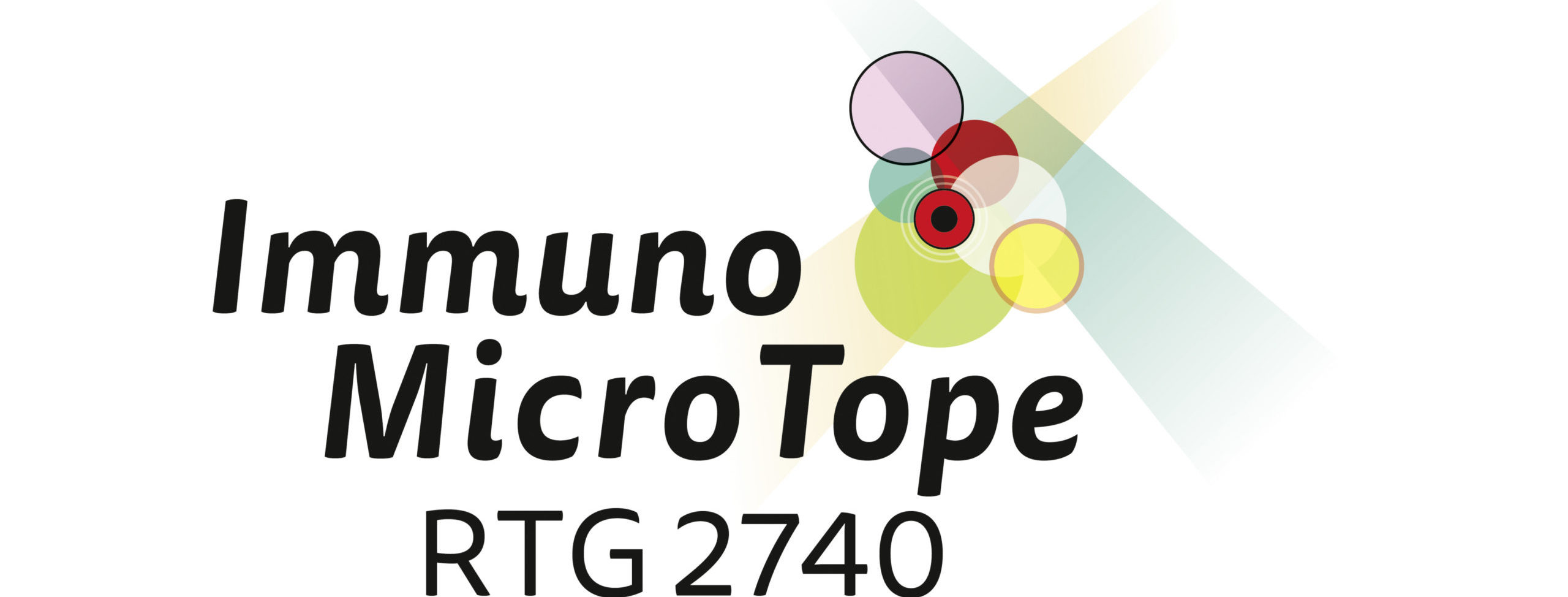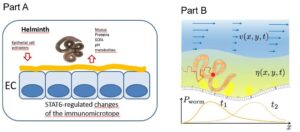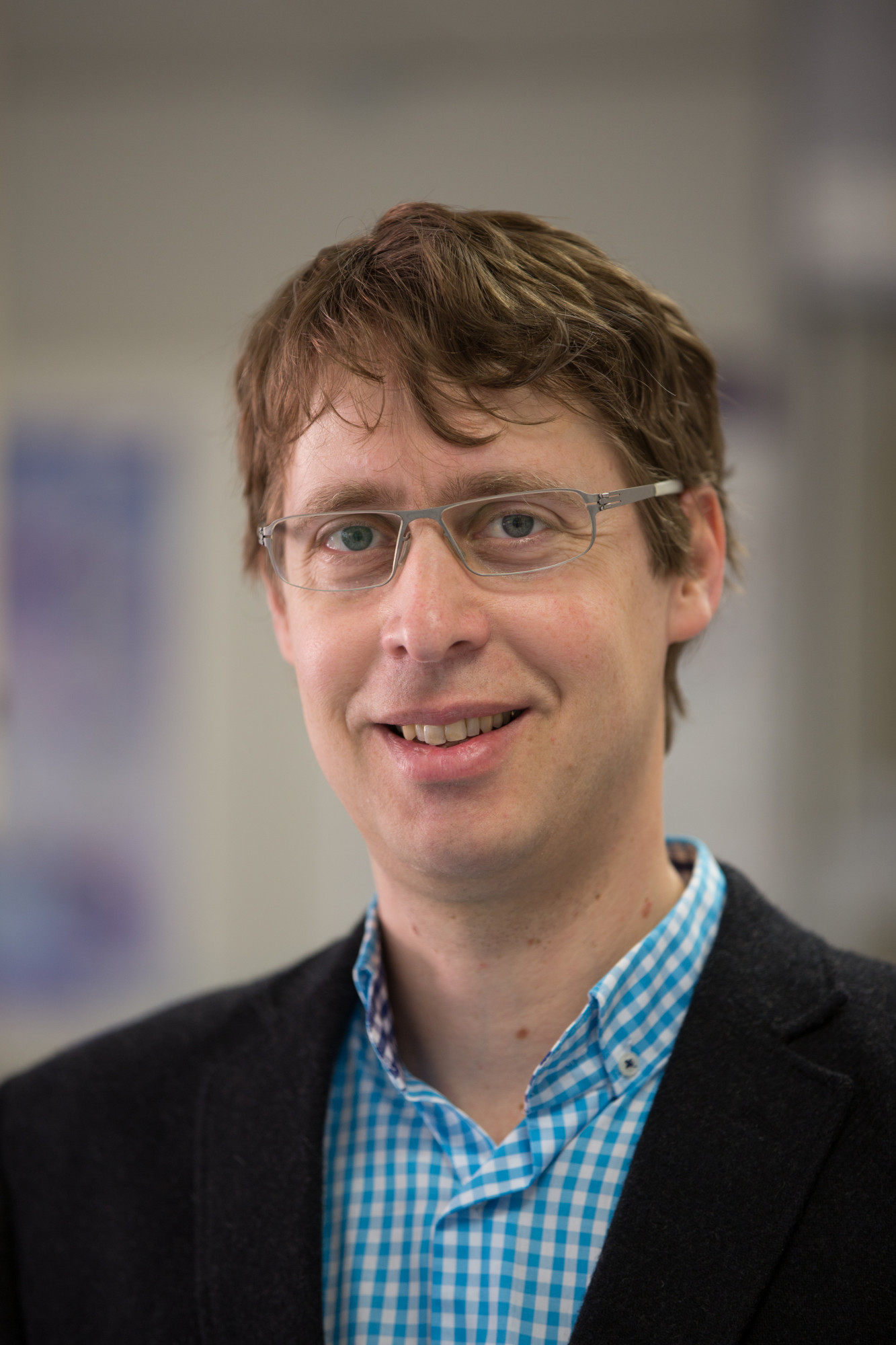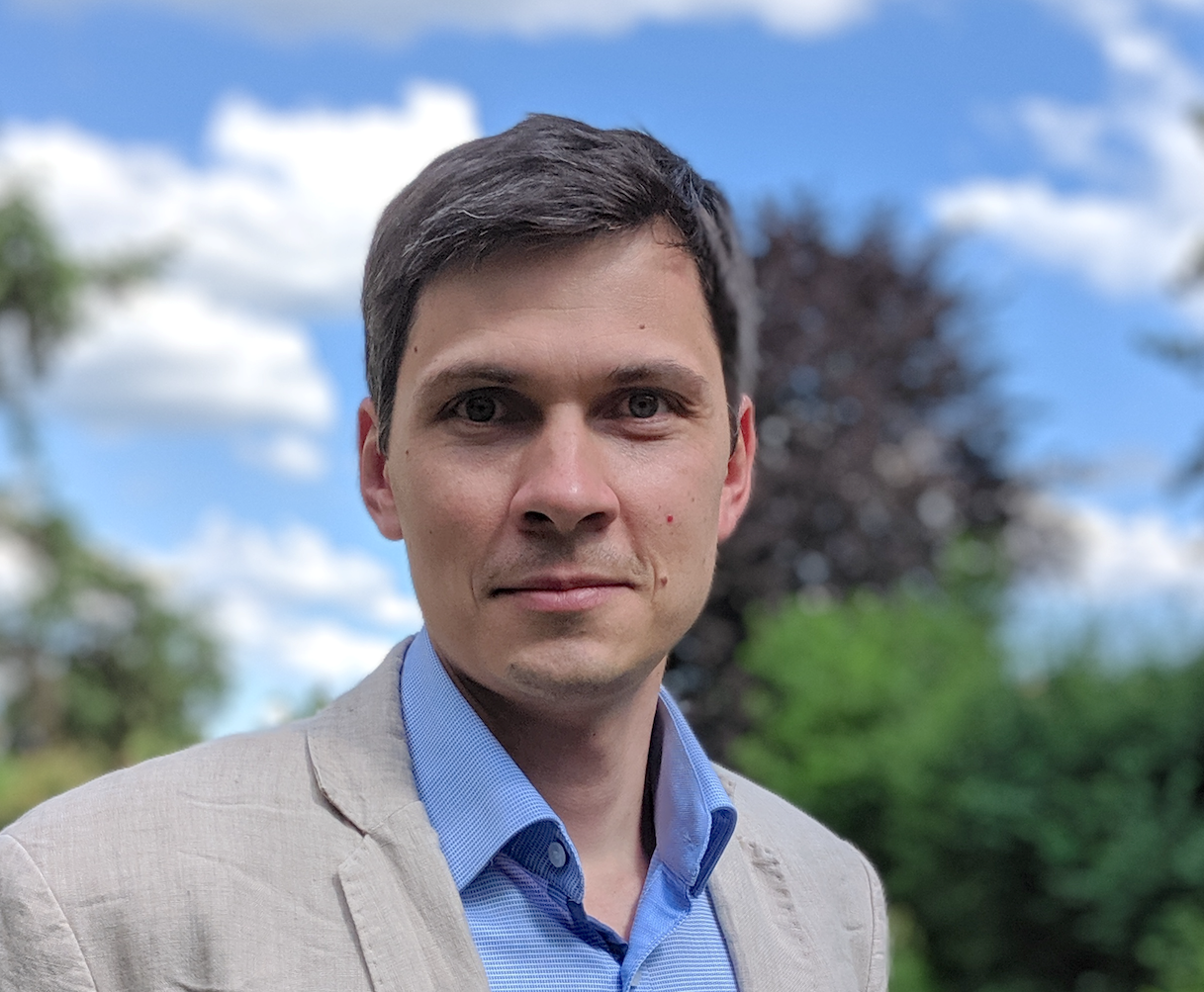A7: Characterization and mathematical modeling of the STAT6-regulated micro milieu in response to Nippostrongylus (N.) brasiliensis infections
A7: Characterization and mathematical modeling of the STAT6-regulated
micromilieu in response to Nippostrongylus (.) brasiliensis infections
Helminth infections affect about 1/3 of the world population and to date there are no helminth-specific vaccines available. IL-4/IL-13-induced activation of the transcription factor STAT6 in non-hematopoetic cells plays a critical role for worm expulsion during infection with gastrointestinal helminths.
In part A of this project (group of Prof. Vöhringer) we revealed major changes of the STAT6-regulated immunomicrotope in the small intestine of N. brasiliensis-infected mice (transcriptome of host and parasite, metabolome and microbiome). We will further determine the impact of worm-derived factors and defined metabolites on lung and intestinal epithelial cell differentiation using organoid culture models of mouse and human origin. In addition, we will address the role of macrophages, eosinophils and ILC2s for establishment of a protective immunomicrotope in skin and lung during secondary N. brasiliensis infection.
In part B of this project (group of Prof. Zaburdaev) we established a mathematical model with a set of differential equations to describe how STAT6-regulated changes in the immunomicrotope impact the transition of N. brasiliensis parasites through various host tissues. We next will expand our mathematical modeling to the specific niches of lungs and intestinal epithelia thus forming a comprehensive system’s scale model of the infection. We will further develop algorithms for the comparative analysis of larval and adult worm movements in STAT6-regulated micromilieus. With its help we aim to determine how STAT6-regulated metabolites affect larval fitness and speed of movement in matrices with pre-defined material properties.
Overall, our collaborative research project will help to better characterize how STAT6-regulated changes of the local micromilieu in different tissues affect larval activity and protective immunity.
Supervisors
Prof. Dr. rer. nat. David Vöhringer
91054 Erlangen
- Phone number: +49 9131 85-32735
- Email: david.voehringer@uk-erlangen.de
- Website: https://www.infektionsbiologie.uk-erlangen.de/
Prof. Dr. Vasily Zaburdaev
91054 Erlangen
- Phone number: +49 9131 8284102
- Email: vasily.zaburdaev@fau.de
- Website: https://www.mathlife.nat.fau.de/



